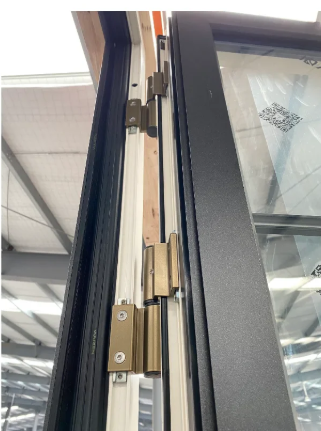Introduction
Choosing the correct window hardware is essential for ensuring durability, performance, and long-term satisfaction—especially when it comes to aluminum alloy window hinges. These small components play a major role in window function, safety, and appearance. In this article, we guide you through selecting the right aluminum alloy window hinge based on your window type, project requirements, and quality expectations.

1. Understand Your Window Type
Different window structures require specific hinge types:
- Casement Windows (Side Hung): Need strong friction stays or butt hinges for smooth lateral opening.
- Awning Windows (Top Hung): Typically use top-mounted friction hinges.
- Tilt and Turn Windows: Require multi-axis hinges with added weight-bearing features.
Each configuration demands a hinge that aligns with its opening angle, mounting position, and operational needs.
2. Assess Load Capacity and Hinge Specifications
Always match hinge strength to the window sash weight. Lighter windows can use smaller hinges, while larger or double-glazed windows need heavy-duty options. Check for specifications like:
- Load-bearing capacity (in kg)
- Hinge length (commonly 8″, 10″, 12″)
- Thickness and material grade of the aluminum alloy
A mismatch can lead to sagging, jamming, or premature wear.
3. Consider Surface Finishes for Durability
Aluminum alloy hinges are often treated to resist corrosion and match window aesthetics. Common surface treatments include:
- Anodizing: Durable and corrosion-resistant, often with a silver or black matte finish
- Powder Coating: Provides color variety and added protection
- Electrophoresis: Premium finish with a smooth texture and long-lasting coating
For coastal or high-humidity environments, higher-grade finishes are essential.
4. Check Compatibility with Regional Standards
When sourcing for international or export projects, ensure the hinges meet the required certifications and standard dimensions in your target market:
- Europe: CE compliance, EN standards
- USA: ASTM benchmarks
- Asia: GB (China), JIS (Japan) or specific regional demands
Choosing standardized products can reduce installation errors and increase customer satisfaction.
5. Installation and Maintenance Tips
Even high-quality hinges won’t perform well if installed improperly. Ensure:
- Correct screw placement and torque
- Lubrication during and after installation
- Regular checks for wear or loosening in commercial buildings
Also consider hinges with detachable pins or easy-replace mechanisms for long-term serviceability.
Conclusion
Choosing the right aluminum alloy window hinge isn’t just about selecting a hardware piece—it’s about ensuring safety, durability, and a smooth user experience. By understanding your window type, assessing technical specs, verifying surface treatments, and aligning with regional standards, you can make informed decisions that support long-lasting performance. Whether you’re a contractor, builder, or importer, the right hinge makes all the difference.
